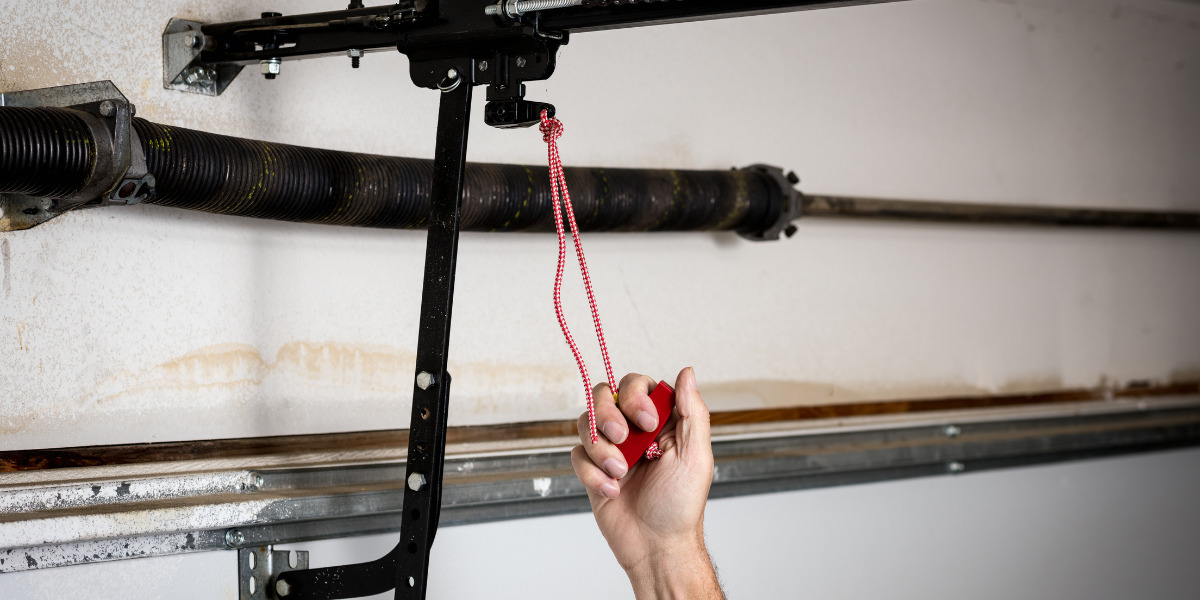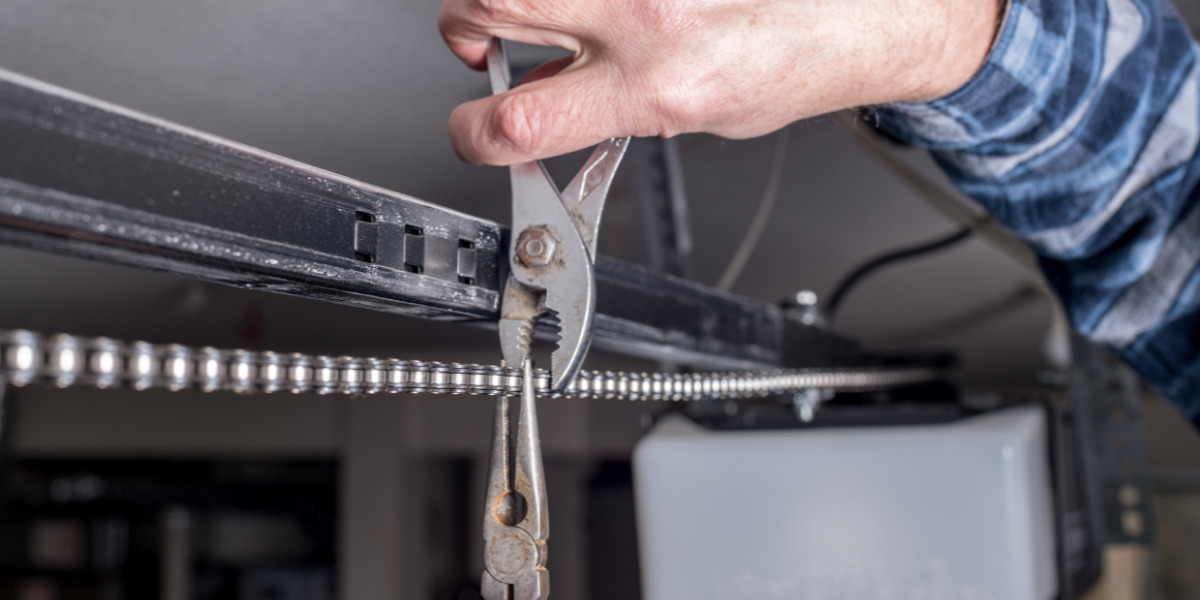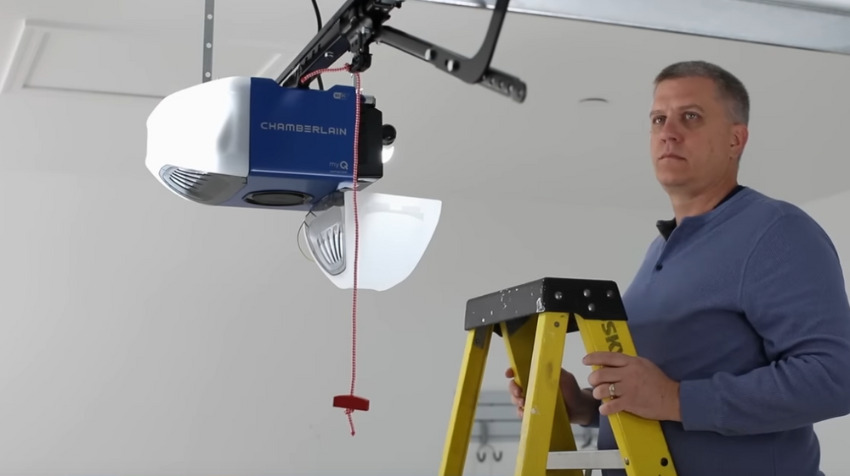Maximize the Lifespan of Your Garage Door Opener with These Expert Tips
A well-functioning garage door opener is an essential component of any modern home, offering both convenience and security to homeowners. Gone are the days of manually lifting heavy garage doors, as garage door openers automate the process, making it effortless to access the garage with just a press of a button. In this fast-paced world, where time is of the essence, a reliable garage door opener saves precious minutes and ensures a smooth entry and exit from the garage.
Regular maintenance is the key to prolonging the lifespan of your garage door opener and maximizing its efficiency. Just like any other mechanical device, garage door openers undergo wear and tear over time, especially with frequent use. Without proper care and attention, the opener’s performance may deteriorate, leading to costly repairs or premature replacements.
Understanding the Role of Garage Door Openers
A garage door opener is a motorized device that plays a crucial role in automating the process of opening and closing garage doors. Before the advent of garage door openers, homeowners had to manually lift and lower their garage doors, which could be a physically demanding and time-consuming task. Garage door openers revolutionized the way we use and interact with our garage spaces, providing convenience, safety, and security.
Different types of garage door openers available in the market:
- Chain-Drive Garage Door Opener: Chain-drive openers are one of the most common and budget-friendly options available. They use a metal chain to pull or push the trolley that moves the garage door along the track. While they are durable and suitable for heavy garage doors, they can be noisier compared to other types.
- Belt-Drive Garage Door Opener: Belt-drive openers operate similarly to chain-drive openers, but instead of a metal chain, they use a reinforced rubber belt to move the trolley. The rubber belt significantly reduces noise during operation, making them a popular choice for homes with living spaces adjacent to or above the garage.
- Screw-Drive Garage Door Opener: Screw-drive openers use a threaded steel rod to lift and lower the garage door. They have fewer moving parts than chain or belt-drive openers, which often translates to reduced maintenance requirements. However, they can be noisier and may not be as smooth in operation as belt-drive openers.
- Direct-Drive Garage Door Opener: Direct-drive openers have a unique design where the motor itself moves along the garage door’s track. There are no belts or chains involved, making them one of the quietest options available. Direct-drive openers also require minimal maintenance due to their simple design.
Benefits of using a reliable and efficient garage door opener for homeowners:
- Convenience: A reliable garage door opener offers unmatched convenience, allowing homeowners to effortlessly open and close their garage doors with the press of a button. This is especially beneficial during harsh weather conditions or when in a hurry.
- Enhanced Security: A properly functioning garage door opener enhances the security of the entire home. With automatic locking features and robust mechanisms, it becomes more challenging for potential intruders to gain unauthorized access to the garage and, subsequently, the house.
- Safety: Modern garage door openers are equipped with advanced safety features that prevent accidents and injuries. The auto-reverse mechanism, for example, ensures that the garage door reverses its direction if it encounters an obstruction, preventing entrapment.
- Noise Reduction: Depending on the type of opener chosen, noise reduction can be a significant benefit. Belt-drive and direct-drive openers are especially known for their quiet operation, making them ideal for homes with bedrooms or living spaces located near the garage.
- Longer Lifespan of Garage Doors: Garage door openers that operate smoothly and efficiently can help extend the lifespan of the garage door itself. The controlled and balanced movement of the door reduces wear and tear on its components, leading to fewer repairs and replacements over time.
- Energy Efficiency: With quick and efficient opening and closing, homeowners can minimize heat loss or gain in the garage, contributing to overall energy efficiency in the home.
- Home Value: Installing a reliable and efficient garage door opener can positively impact the overall value of the home. Potential buyers appreciate the added convenience and security provided by a well-maintained garage door system.
Signs of a Malfunctioning Garage Door Opener
Strange Noises: One of the first signs that your garage door opener might be malfunctioning is the presence of unusual noises during operation. Grinding, screeching, or rattling sounds could indicate problems with the motor, gears, or other moving components.
Slow Operation: If your garage door takes longer than usual to open or close, it could be a sign of a malfunctioning opener. This could be due to worn-out parts, inadequate lubrication, or even electrical issues affecting the opener’s performance.
Uneven Movement: When your garage door opens or closes unevenly, with one side moving faster or slower than the other, it suggests an imbalance or misalignment in the door’s tracks or the opener’s mechanisms. This could lead to further complications if not addressed promptly.
Inconsistent Response to Remote or Wall Switch: If you notice that your garage door opener responds intermittently or not at all to the remote control or wall switch, there might be issues with the opener’s wiring or circuitry. It could also be a sign of a failing remote or sensor.
Reversing or Stopping Midway: A garage door that unexpectedly reverses direction or stops midway during operation can be a safety hazard. This behavior is usually triggered by the opener’s safety features, such as the auto-reverse mechanism, when it detects an obstruction in the door’s path. However, if there is no visible obstruction, it could be a sign of a malfunctioning safety sensor.
Expert Tips for Garage Door Opener Maintenance
Regular Inspection:
- Advise homeowners to conduct periodic visual inspections of the garage door opener: Regular inspections are crucial for identifying potential issues early on and preventing costly repairs. Homeowners should visually inspect their garage door opener at least once every few months. Start by observing the opener’s operation while the door is in motion. Look for any jerky movements, unusual noises, or delays in response. Pay attention to any signs of imbalance or misalignment of the door.
- Highlight key components to check for wear and tear (e.g., springs, cables, rollers): During the inspection, homeowners should focus on specific components that are prone to wear and tear. These include:
- Springs: Look for signs of rust, deformation, or gaps in the coils.
- Cables: Check for fraying or loose strands in the lifting cables.
- Rollers: Examine the rollers for any signs of damage or excessive wear, such as flat spots or cracks.
- Tracks: Ensure that the tracks are clean, aligned, and free from any obstructions.
Lubrication:
- Explain the significance of lubricating moving parts to reduce friction and extend the opener’s lifespan: Lubrication is a fundamental aspect of garage door opener maintenance. Proper lubrication reduces friction between moving parts, preventing premature wear and tear. It also helps the garage door operate smoothly and quietly. Over time, lack of lubrication can lead to costly repairs and even shorten the lifespan of the opener.
- Provide a step-by-step guide on how to properly lubricate the garage door opener: To lubricate the garage door opener, follow these steps:
- Step 1: Disconnect the power: Before starting any maintenance, disconnect the power supply to the garage door opener to ensure safety.
- Step 2: Clean the tracks: Use a clean cloth to wipe away any debris or dirt from the tracks.
- Step 3: Lubricate moving parts: Apply a silicone-based or lithium-based garage door lubricant to the following parts:
- Hinges
- Rollers
- Springs
- Bearings
- Armbar
- Step 4: Wipe off excess lubricant: After applying the lubricant, wipe off any excess to avoid attracting dirt and debris.
Tightening Hardware:
- Discuss the importance of checking and tightening loose hardware to ensure smooth functionality: With regular use, the vibrations from the garage door’s movement can cause hardware to loosen over time. Loose hardware can lead to misalignment and compromise the opener’s performance and safety. Therefore, it’s essential to check and tighten all the hardware regularly.
- Provide a list of essential tools needed for this task: Homeowners will need the following tools for tightening hardware:
- Socket wrench or adjustable wrench
- Screwdriver (Phillips and flat-head)
To tighten the hardware, follow these steps:
- Step 1: With the garage door closed, inspect all the bolts and screws on the garage door opener.
- Step 2: Using the appropriate tools, tighten any loose bolts, nuts, or screws found on the opener’s rail, armbar, and motor assembly.
- Step 3: Check the mounting brackets that hold the opener to the ceiling and tighten them if necessary.
Testing Safety Features:
- Instruct homeowners on how to test safety features like auto-reverse and sensors regularly: The safety features of a garage door opener are designed to prevent accidents and injuries. Regular testing is essential to ensure they are functioning correctly. Homeowners should test these safety features at least once a month.
- Explain the role of these features in preventing accidents and injuries:
- Auto-Reverse: The auto-reverse feature causes the garage door to stop and reverse its direction if it encounters an obstruction while closing. This prevents the door from closing on a person, pet, or object in its path.
- Sensors: Garage door openers are equipped with photo-eye sensors, usually placed near the ground on both sides of the door. These sensors detect any obstructions or movement in the door’s path. If the sensors are misaligned or blocked, the door will not close.
To test these safety features:
- Step 1: Place a piece of wood or a soft object on the ground in the door’s path.
- Step 2: Close the garage door using the opener.
- Step 3: When the door comes into contact with the object, it should immediately reverse and open.
- Step 4: Test the photo-eye sensors by waving an object, such as a broom, in front of them while the door is closing. The door should stop and reverse.

Troubleshooting Common Problems:
Garage Door Opener Not Responding: Dealing with a garage door opener that refuses to respond can be frustrating, but with some simple troubleshooting, you can often resolve the issue yourself. Here’s a step-by-step guide to troubleshoot and fix unresponsive openers:
- Check Power Supply:
- Verify that the garage door opener is properly plugged into a working power outlet.
- Look for any tripped circuit breakers or blown fuses that may be affecting the power supply.
- Inspect the Remote:
- If your garage door opener uses a remote, ensure that it has fresh batteries and is in good working condition.
- Try reprogramming the remote according to the manufacturer’s instructions.
- Test Wall Switch and Keypad:
- If your opener has a wall-mounted control panel or keypad, test them to see if they are functioning correctly.
- If the opener responds to the wall switch but not the remote, the remote may need reprogramming or replacement.
- Check Safety Sensors:
- Modern garage door openers have safety sensors located near the floor on either side of the door.
- Make sure the sensors are clean and correctly aligned. Any obstruction or misalignment can prevent the door from responding.
- Examine the Wiring:
- Inspect the wiring connecting the opener to the power supply and other components.
- Look for any loose or damaged wires that may be causing the issue.
- Reset the Opener:
- Some garage door openers have a reset button or process. Refer to the manufacturer’s manual for instructions on how to reset your specific model.
- Contact Professional Help:
- If you have tried all the above steps and the opener is still not responding, it may be a more complex electrical problem.
- At this point, it’s best to seek assistance from a professional garage door technician to diagnose and resolve the issue safely.
Noisy Garage Door Opener: A garage door opener can produce various noises during operation, some of which can indicate underlying issues. Here’s how to address a noisy garage door opener:
- Identify the Noise:
- Pay attention to the type of noise the opener is producing. It could be grinding, squeaking, rattling, or humming.
- Lubricate Moving Parts:
- Apply a high-quality garage door lubricant to the moving parts of the opener, such as the chain, rollers, and hinges.
- Lubrication reduces friction, which can often eliminate or reduce noises.
- Tighten Hardware:
- Loose hardware can contribute to rattling or vibrating noises.
- Inspect and tighten all screws, nuts, and bolts on the garage door and opener.
- Check for Worn Parts:
- Inspect the garage door opener components for any signs of wear or damage.
- Replace any worn-out parts, such as the chain or rollers, as needed.
- Consider Sound Insulation:
- Install sound insulation on the garage door or the surrounding walls to dampen noise.
- Professional Inspection:
- If the noise persists or worsens despite your efforts, it’s advisable to seek help from a professional technician.
- They can identify the root cause of the noise and perform the necessary repairs or adjustments.
Uneven Closing or Opening: If your garage door is closing or opening unevenly, it can be a safety hazard and may lead to further damage. Follow these steps to troubleshoot and address the problem:
- Check for Obstructions:
- Ensure there are no objects or debris blocking the garage door’s path.
- Inspect the tracks for any obstructions that might hinder the smooth movement of the door.
- Examine the Tracks:
- Inspect the tracks on both sides of the door for bends, dents, or misalignments.
- If any issues are found, carefully straighten the tracks with the help of a rubber mallet or seek professional assistance for complex repairs.
- Adjust the Limit Switches:
- The garage door opener comes with limit switches that control the door’s travel distance.
- Adjust the limit switches following the manufacturer’s instructions to ensure smooth and even movement.
- Balance the Door:
- A properly balanced garage door is crucial for smooth operation.
- Disconnect the opener and manually operate the door. If it doesn’t stay in place when partially open, it might be unbalanced, and professional adjustment is necessary.
- Seek Professional Help:
- Uneven closing or opening issues can be caused by more complex mechanical or structural problems.
- Contact a qualified garage door technician to perform a comprehensive inspection and address the issue effectively.
Frequently Asked Questions
1. How often should I perform maintenance on my garage door opener? Regular maintenance is essential for ensuring smooth functionality. It’s recommended to perform maintenance every six months. This includes inspecting the opener’s components, lubricating moving parts, and checking the safety features.
2. What are the signs that my garage door opener needs maintenance? There are several signs that indicate your garage door opener needs attention. These include unusual noises during operation, slow or jerky movements, and difficulty in opening or closing the door smoothly. If you notice any of these issues, it’s time for maintenance.
3. Can I perform garage door opener maintenance myself, or should I hire a professional? While some basic maintenance tasks can be done by homeowners, it’s best to hire a professional for a comprehensive inspection and tune-up. Garage door openers have intricate mechanisms, and a trained technician can identify and fix potential problems more effectively.
4. How do I lubricate the garage door opener and its components? To lubricate your garage door opener, use a silicone-based lubricant and apply it to the opener’s chain or screw drive. Also, lubricate the rollers, hinges, and tracks. Avoid using WD-40 or grease as they can attract dirt and debris.
5. Why is it essential to check the safety features of the garage door opener? Garage door openers have safety features like auto-reverse mechanisms to prevent accidents. Testing these features regularly is crucial to ensure that the door stops and reverses when it encounters an obstruction, such as a person or an object.
By following these expert tips for troubleshooting and maintenance, you can ensure the smooth functionality and longevity of your garage door opener, providing convenience and peace of mind for you and your family. Remember that safety should always be a priority, and when in doubt or facing complex issues, it’s best to seek professional assistance.



